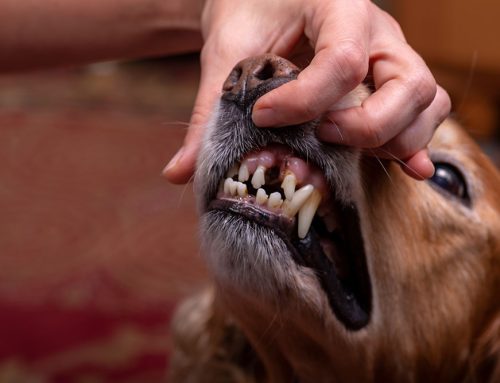Is your pet constantly scratching, biting at their skin, or losing fur along the back or tail? If so, they may be suffering from Flea Allergy Dermatitis (FAD)—one of the most common skin conditions seen in dogs and cats.
Unlike a typical flea infestation, FAD is an allergic reaction to proteins in flea saliva. Just one bite can trigger a powerful immune response, leading to intense itching, skin inflammation, and even secondary infections. That’s why even indoor pets with minimal flea exposure are still at risk if they have flea allergies.
At the Veterinary Medical Center of Indian River County, we help pet families diagnose, treat, and prevent flea allergies year-round. Early intervention and consistent flea prevention are the keys to comfort and healthy skin.
What Is Flea Allergy Dermatitis (FAD)?
FAD occurs when a pet’s immune system overreacts to proteins in flea saliva. This extreme sensitivity means that even a single flea bite can cause days of intense discomfort.
Often, pet owners don’t actually see fleas on their pet—especially in allergic animals who groom excessively. That’s why it’s important to recognize the symptoms and seek veterinary guidance.
Learn more about Flea Allergies in Cats – Cornell Feline Health Center
Symptoms of Flea Allergy Dermatitis
Watch for these common signs:
- Intense scratching or biting, especially on the back, tail base, belly, or thighs
- Red, irritated, or scabbed skin
- Bald patches or thinning fur
- Hot spots or recurrent skin infections
Want more detail? Read the Merck Veterinary Manual on Flea Allergy Dermatitis
How Is FAD Diagnosed?
Veterinarians don’t rely on flea sightings alone to diagnose FAD. Instead, we use a combination of:
- Physical examination – Checking for “flea dirt,” bite marks, and characteristic hair loss
- Skin scrapings and allergy testing – Ruling out other causes like mites or food allergies
- Response to flea prevention – Improvement with strict flea control confirms diagnosis in many cases
Explore more pet allergy management advice from Purdue Veterinary Hospital
Treatment: How to Help an Itchy Pet Feel Better
Step 1: Eliminate Fleas—Fast
For pets with flea allergies, prevention is the best medicine. Effective products include:
- Oral flea medications: Simparica, NexGard, Capstar
- Topical flea preventives: Advantage, Revolution, Bravecto
- Flea collars: Seresto (provides long-term protection)
Your vet can recommend the best option based on your pet’s age, breed, and lifestyle.
Why Year-Round Prevention Matters – AAHA
Step 2: Soothe the Skin
When inflammation is severe, we may recommend:
- Medicated shampoos to remove allergens and calm irritated skin
- Topical or oral steroids for short-term relief
- Antihistamines or omega-3 supplements to reduce inflammation over time
Routine grooming can also help control allergens. See the ASPCA’s Guide to Pet Grooming
Fleas in the Environment: Why Treating the Home Is Essential
Only about 5% of the flea population lives on your pet. The rest—eggs, larvae, and pupae—hide in your carpet, furniture, and pet bedding.
Break the Flea Lifecycle
- Wash pet bedding weekly in hot water
- Vacuum regularly, especially around pet areas
- Use flea sprays or foggers (recommended by your vet)
- Treat all pets in the home—even those without symptoms
Understand how fleas reproduce: CDC – The Flea Lifecycle
When to See a Veterinarian
Reach out to your vet if your pet:
- Scratches or bites obsessively
- Has red, swollen, or infected skin
- Loses fur in patches or develops hot spots
- Isn’t responding to over-the-counter flea products
- Seems lethargic, loses weight, or shows signs of chronic discomfort
We’re here to help you find relief for your pet—and peace of mind for you.
Schedule an exam with our team at the Veterinary Medical Center of Indian River County.
Flea Allergies Are Treatable—With the Right Plan
FAD can be frustrating—but with year-round prevention and prompt veterinary care, it’s entirely manageable. Flea control isn’t just about avoiding itching—it’s about protecting your pet’s comfort, skin, and overall well-being.
If you suspect your pet may be suffering from flea allergies, don’t wait. We’ll help you develop a custom flea control plan that works for your home, your lifestyle, and your pet.
Book your appointment today and let us help your pet live flea-free and itch-free—every season.








Leave A Comment